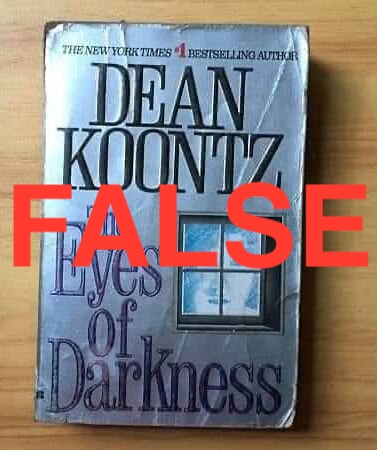Image source: WhatsApp
A number of coronavirus hoaxes are still circulating on Namibian social media despite already having been debunked in other parts of the world.
Namibia Fact Check refers to the following examples of disinformation as hoaxes because they are malicious deceptions with the apparent aim to cause harm by sowing panic and confusion. Here are three of the more popular hoaxes still doing the rounds:
Dean Koontz predicted COVID-19
This remains a popular one. According to this conspiracy theory, best-selling American thriller author Dean Koontz predicted the COVID-19 outbreak in his 1981 novel ‘The Eyes of Darkness’. The conspiracy consists of images of the cover of the novel and a page describing a “Wuhan-400” virus being shared around primarily on WhatsApp and Facebook.
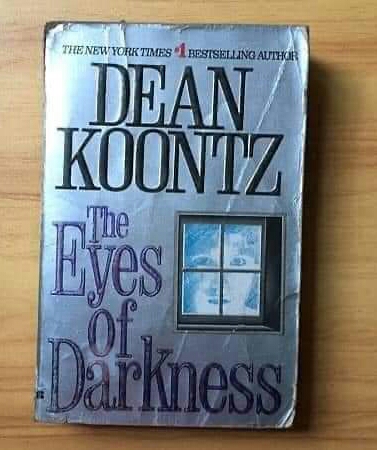
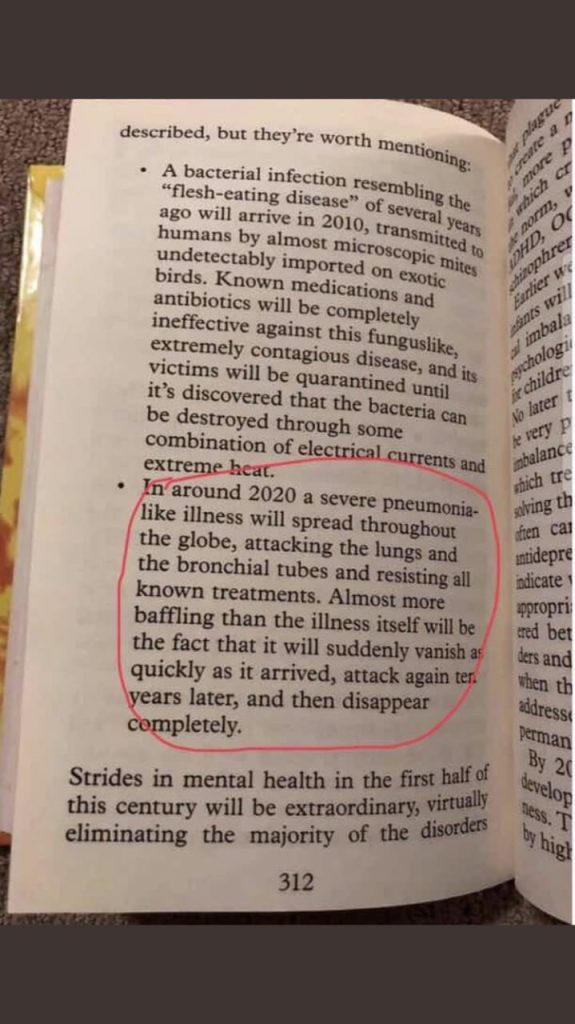
This conspiracy theory has long been debunked. On 26 February 2020, Africa Check published an article in which it stated:
“How does the real Covid-19 compare with the “Wuhan-400” Koontz wrote about in 1981? Both have an association with the Chinese city of Wuhan, but the similarities end there. Koontz’s fictional disease was developed by researchers in a lab. But as various fact-checking organisations have pointed out, there is no evidence that Covid-19 was created in a lab or engineered by people. The novel also says that Wuhan-400 “afflicts only human beings” and that “no other living creature can carry it”. But Covid-19 is believed to have crossed over to humans from animals. Another characteristic of the fictional Wuhan-400 is that it has a “kill-rate” of 100% while the Covid-19 has a fatality rate of 2%.”
– Africa Check
For some other debunks of this conspiracy theory, see here and here.
COVID-19 is part of a pattern of plagues every 100 years
This one has also been around for a while. According to this widely shared hoax, COVID-19 is the latest occurrence in a pattern stretching over centuries, of a major infectious disease outbreak or ‘plague’ occurring regularly at 100-year intervals. The conspiracy theory usually uses an image that looks as follows:
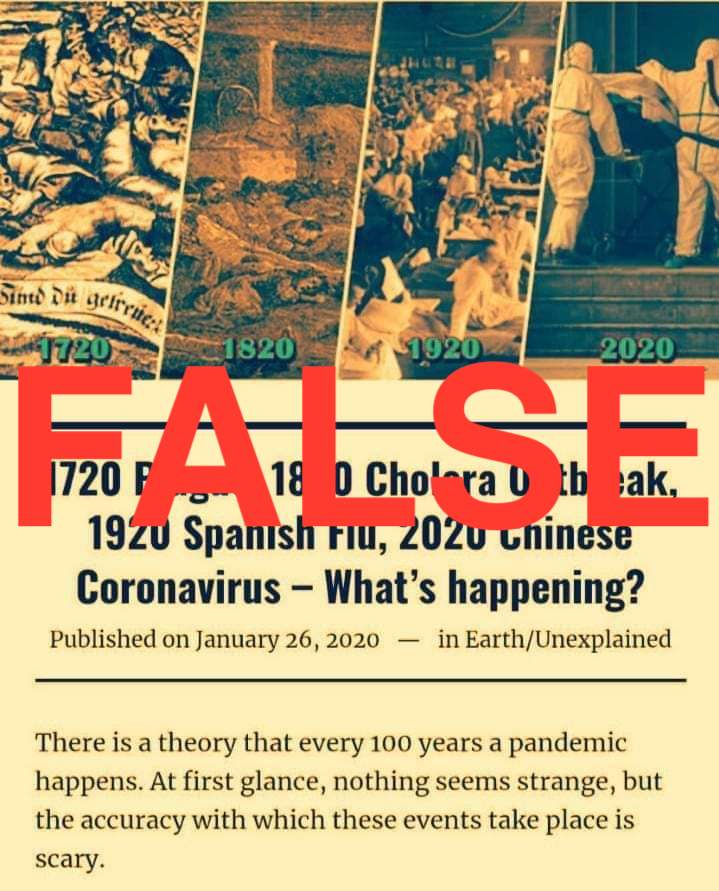
In its debunking of this hoax, AFP Fact Check stated:
“An infographic has been shared hundreds of times on Facebook, Twitter and YouTube alongside a claim it shows that the 2020 novel coronavirus pandemic fits a pattern of viral outbreaks that occur every 100 years. The claim is false; the infographic contains inaccurate information about historical viral outbreaks and ignores other epidemics that do not fit the assumed pattern; health experts told AFP that while certain viruses are seasonal in nature, there is no basis for the claim that viral outbreaks occur once every century.”
– AFP Fact Check
COVID-19 lives in the throat for four days and can be eliminated with warm salt water

In response to this false claim, on 15 March 2020, Africa Check issued this debunk on social media:
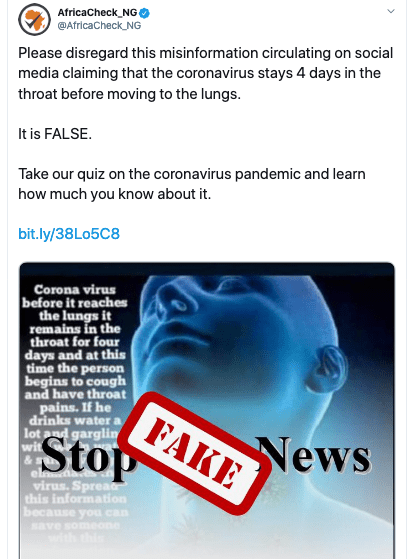
Snopes.com has also debunked the false advice in this graphic on 14 March 2020, stating:
“What works for colds is unlikely to help an already-infected person stave off the COVID-19 coronavirus disease.”
– Snopes.com
And the World Health Organisation (WHO) has long since issued advice that counters these false claims:

For some more debunks of COVID-19 bogus advice, cures and treatments, see this AFP Fact Check article. And here are some more such debunks by the BBC’s Reality Check team.
Namibian social media users are urged not to just share or forward conspiracy theories and ‘advice’ on preventing or treating COVID-19 infection, but to rather seek out guidance from authoritative sources, such as the World Health Organisation (WHO) or other credible authorities. And here’s another resource that could help.

